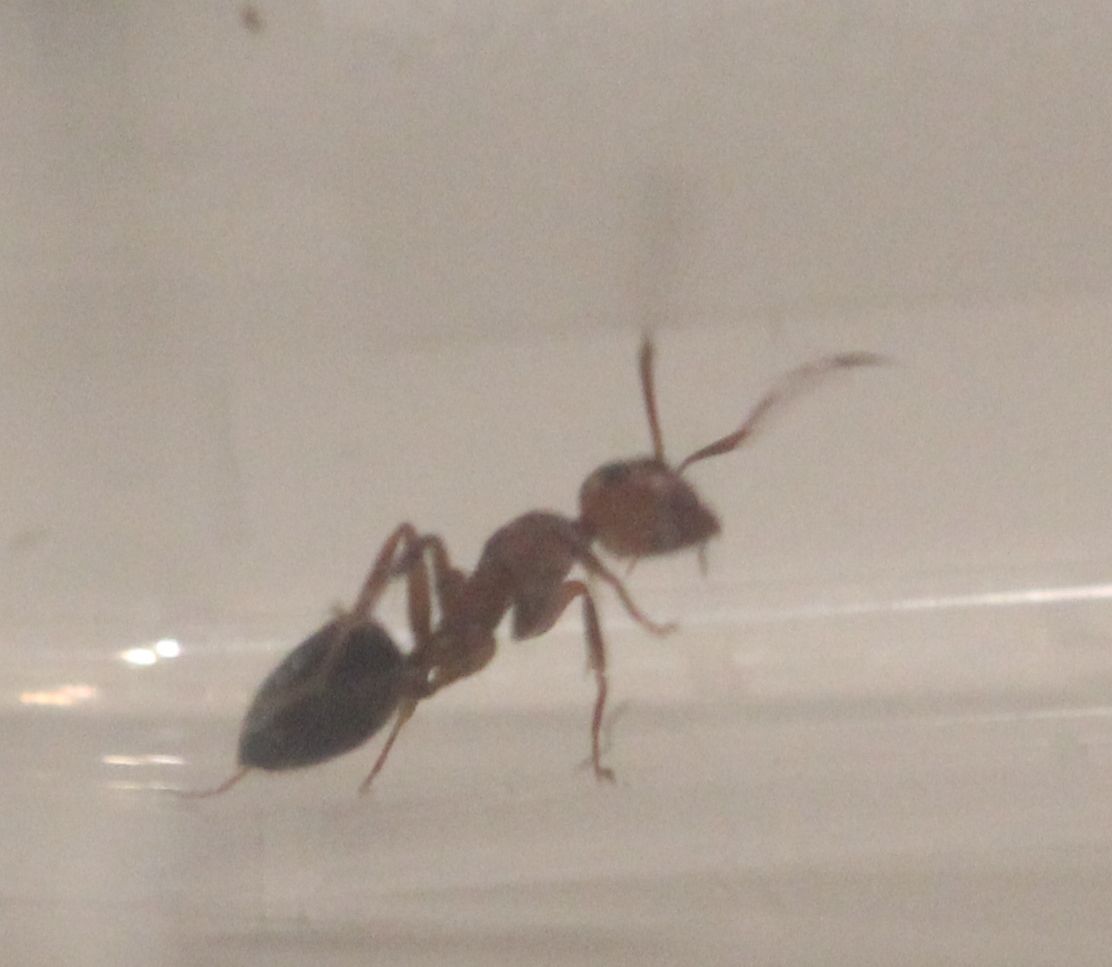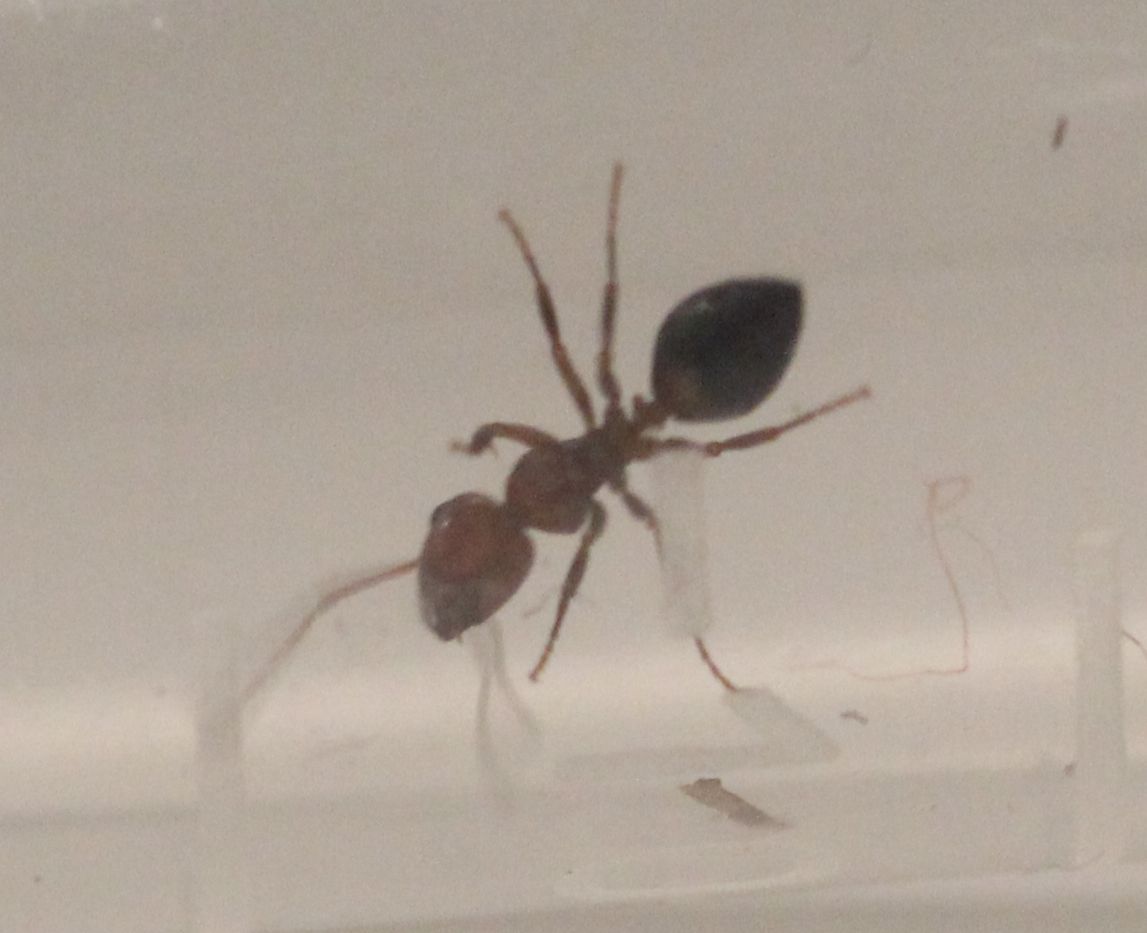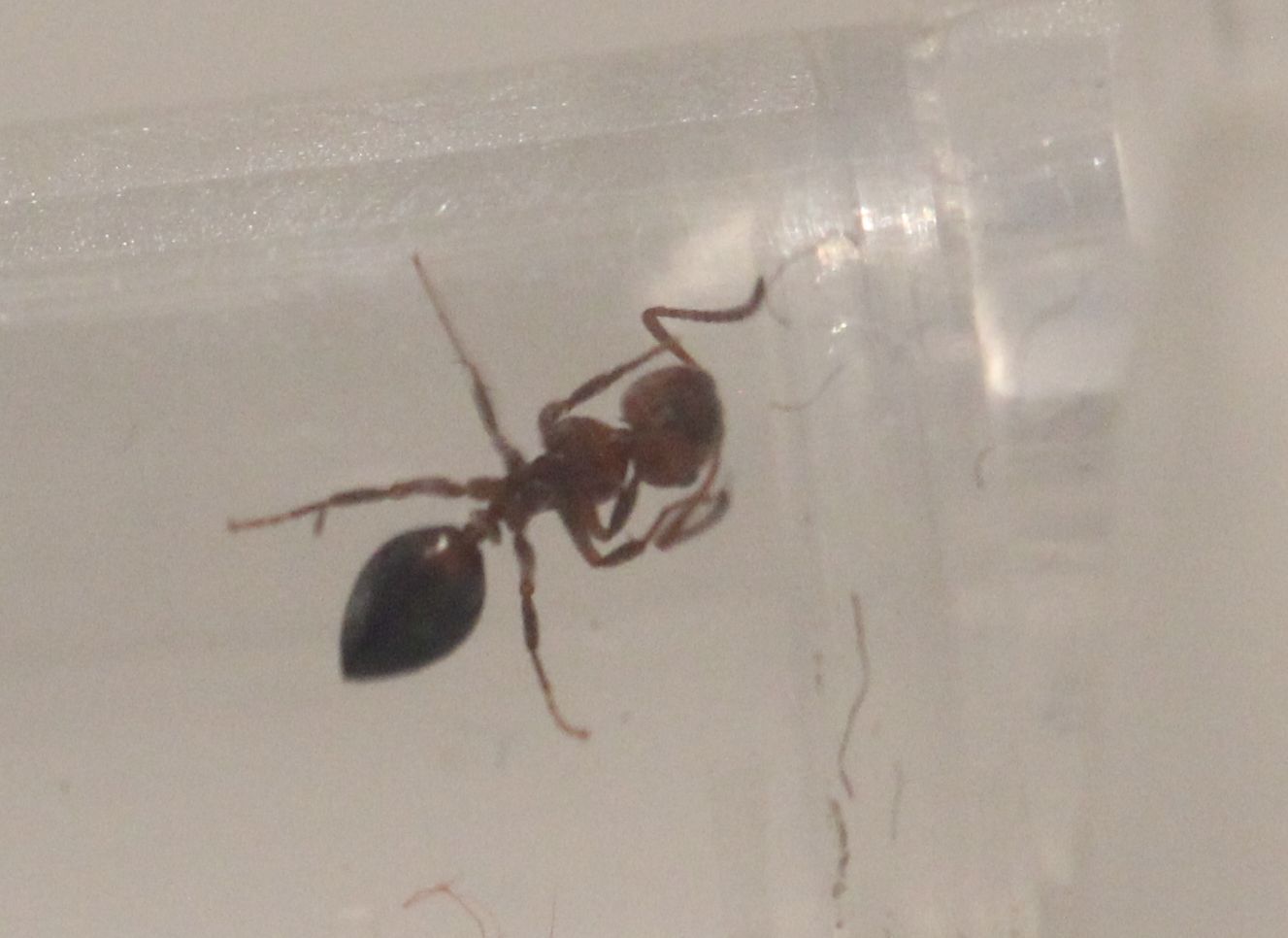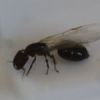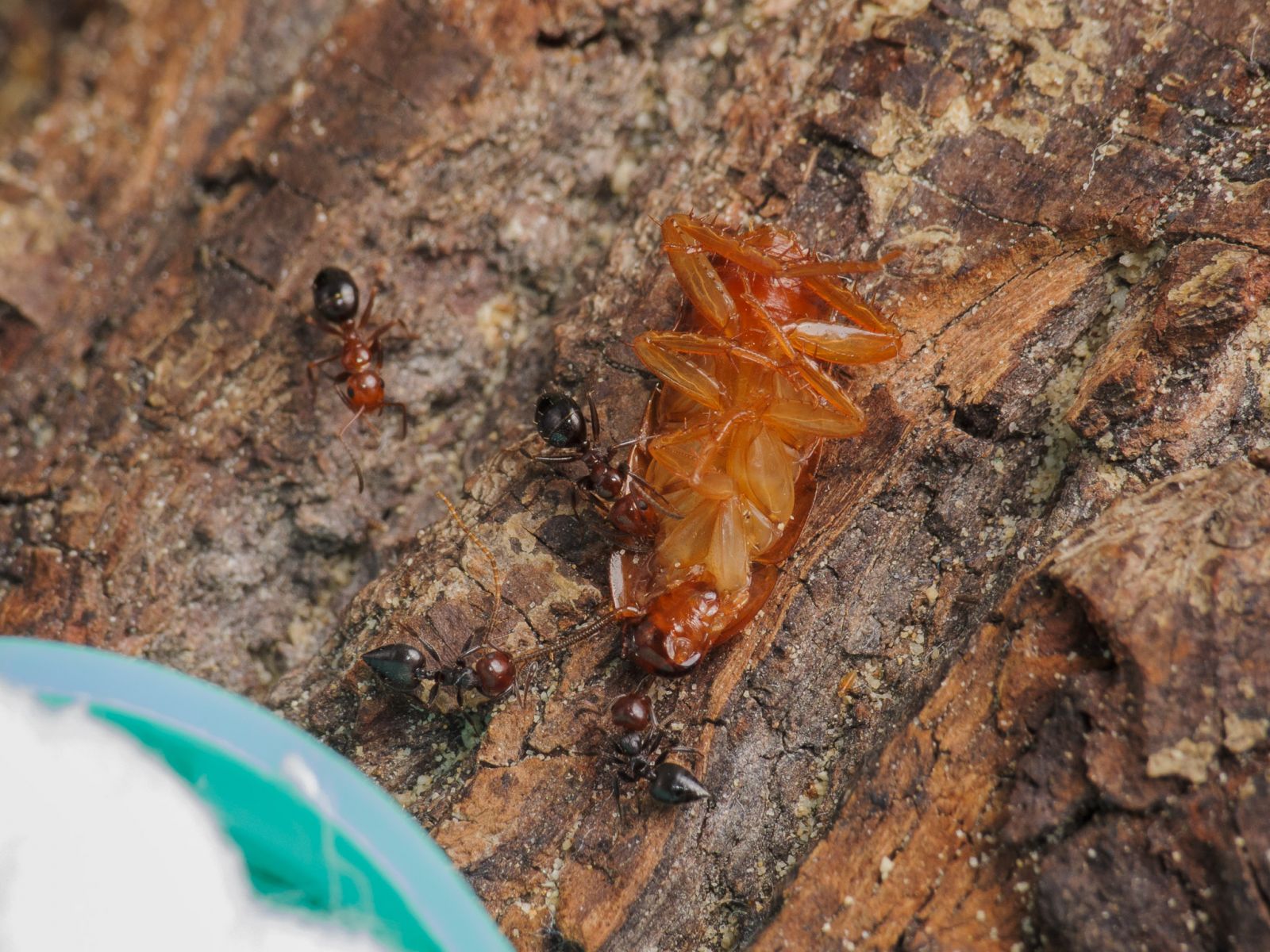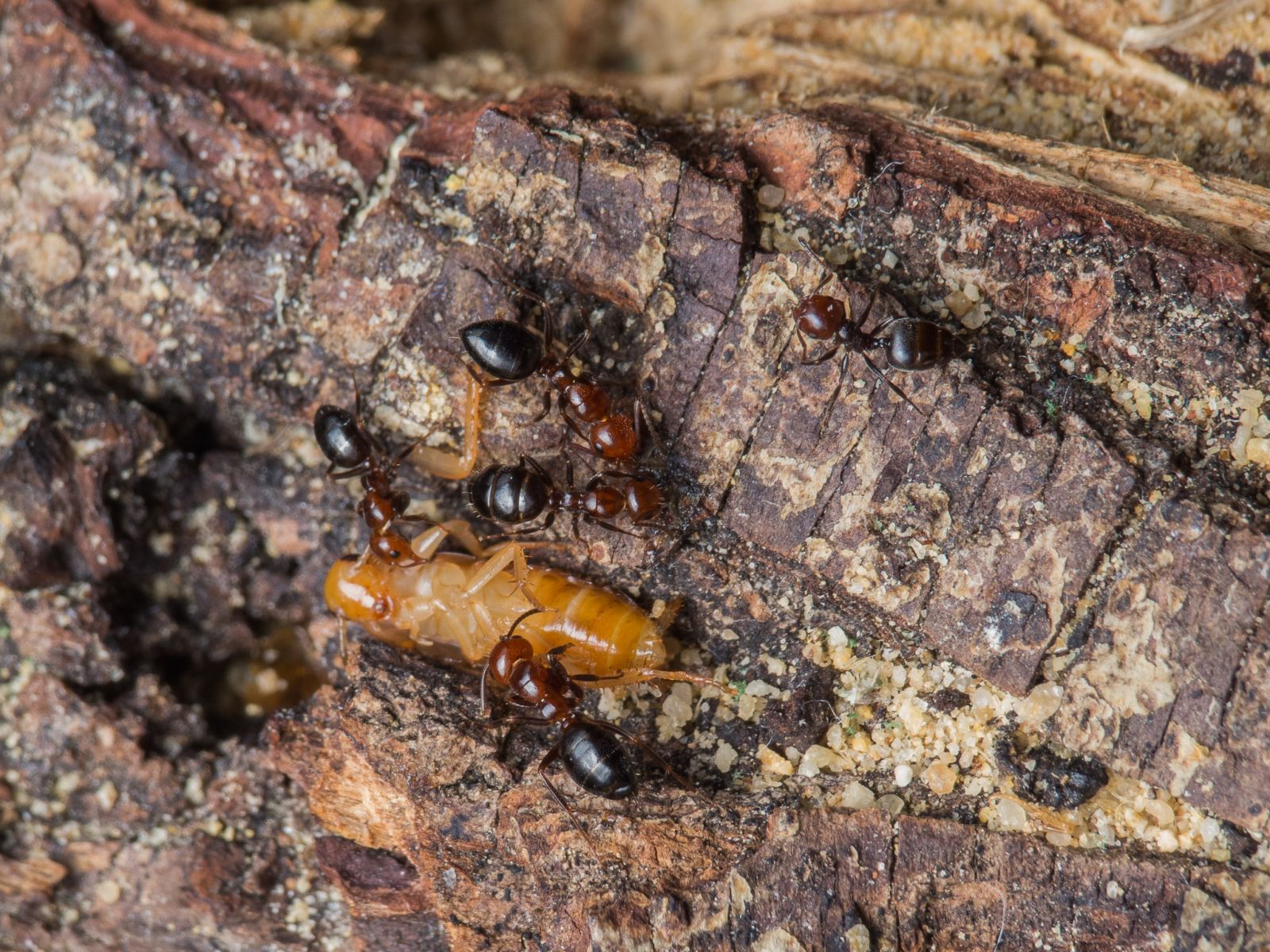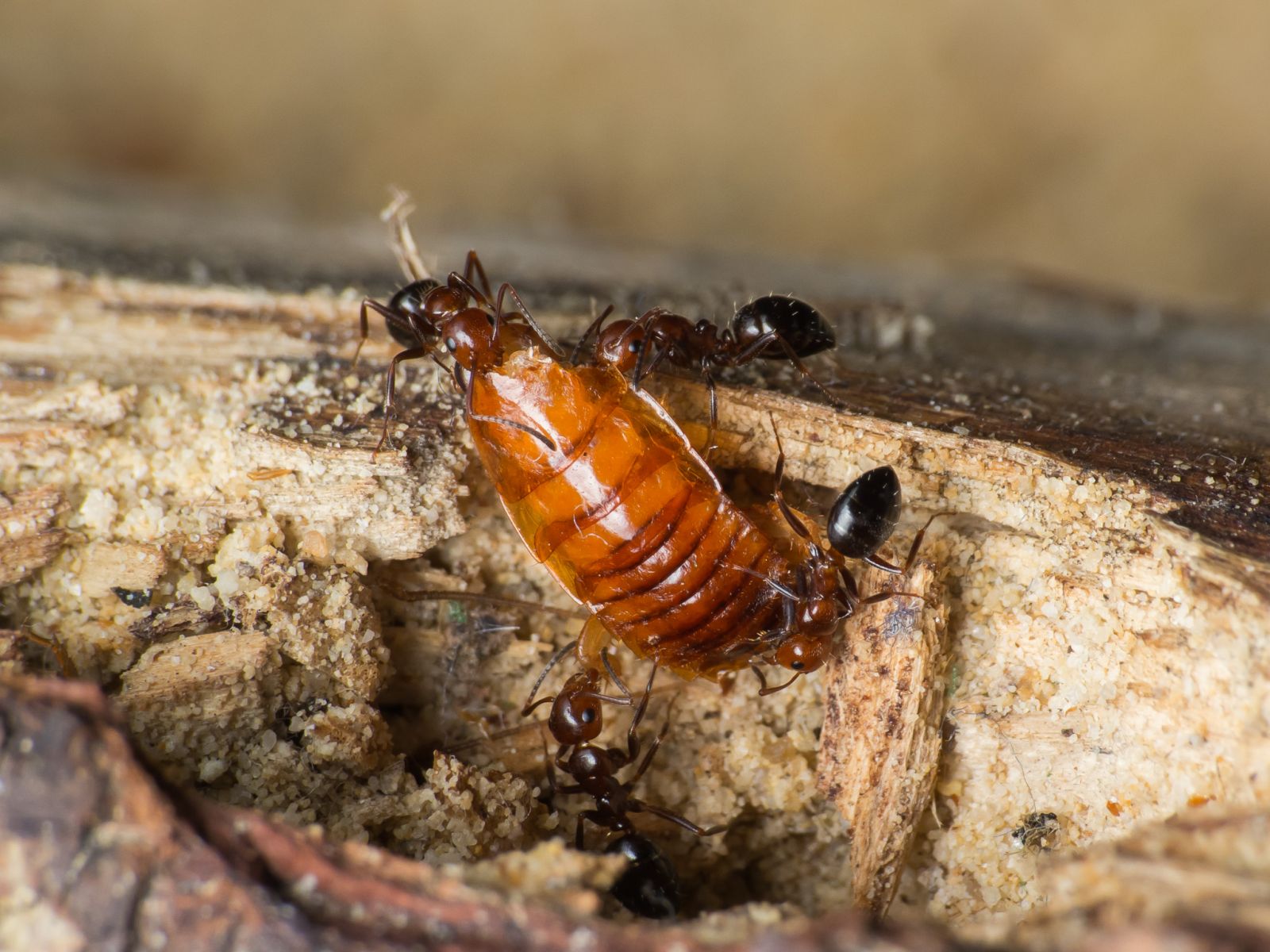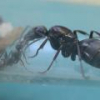1. Location of collection: Caffe in pine forested recreational zone in immediate vicinity of sea.
2. Date of collection: 31th May 2018.
3. Habitat of collection: Pine forest on sea coast, oriented South, on a wooden fence
4. Length : 3-4mm
5. Coloration, hue, pattern and texture: red head and thorax, black gaster
6. Distinguishing characteristics : foraging alone
7. Anything else distinctive: not to my eye.
8. Nest description : n/a.
9 . Post the clearest pictures possible: the container is plastic and not very clear. sorry.
So I was chillin' in a caffe, where I spotted a trail of C. scutellaris. Nothing new, they are all over. But then I spotted a different coloration right next to them. Instead of having black thorax, this one had it red. This is a characteristic of Crematogaster schmidti, an allopatric species to C. scutellaris. What it means is that, due to geographic separation, they bread out into two separate species, unable to hybridize. I have observed C. scutellaris in the coast (south of the very close by mountain range), and C. schmidti to the North of the mountains, not 5 miles away.
It intrigued me as to why they are coexisting now (highways? greater traffic?), so I collected the specimen.
Taking a second look, I realized it was not a Crematogaster at all, so I am asking for your help identifying it.
The photos are crap, but how many Mediterranean ants have such coloration?
Could it be Cataglyphis nodus? Hm... seems too small to be it.
Any ideas?
Tnx!

